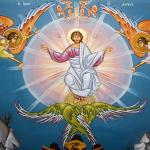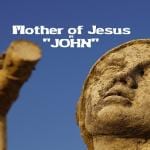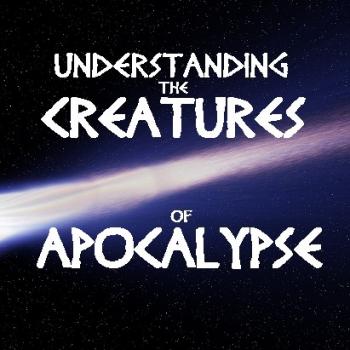
Miraculous doings of Jesus, such as his walking on the Sea, can be better understood through cultural insights into altered states of consciousness experiences.
Miraculous? Or something wondrous that does not violate “laws of nature” but fits very well into a panhuman experience?
Last time, we spoke about two different 21st century Westerners readers and how they misread the story of Jesus walking on the Sea. People from our time and culture tend to read Bible stories like this one (Mark 6;45-52; Matthew 14:22-33; John 6:16-21) as if they written by, for, and about Americans and other Western people. Misunderstanding and distortion necessarily results.
Please watch the video here—
Miraculous? Or Marvelous?
All of this needs to be kept in mind when reading how miraculous Jesus’ marvels and wonders are described in New Testament literature—
-
The Synoptic Gospels (“Mark,” “Matthew,” “Luke”) speak of Jesus’ “mighty deeds” (dynameis)
-
The Fourth Gospel (“John”) calls these “signs” (semeia) and “works” (ta erga).
There are no miracles in the Bible, As we explained before, “miracles” are post-Enlightenment violations of physical laws governing the universe, the so-called “laws of nature.” This needs to be remembered when reading about Jesus “walking on the sea.”
Getting the Culture Right
Dr. John Pilch, Context Group biblical scholar, exhorted Christians and all Gospel readers to respect the fact that Jesus and his followers are MENA (Middle Eastern North African) personalities. Pilch says that even among today’s theologians and biblical scholars that, other than lip service, few recognize that the incarnation happened in the ancient Mediterranean and what that means.
As we explained in an earlier post, anthropologists specializing in the Mediterranean cultural region have established that approximately 80 percent of circum-Mediterranean cultures readily experience altered states of consciousness. Pilch explains that ancient biblical people like Jesus and his followers were included in that 80 percent.
Pilch also explains that Jesus and his followers experienced alternate reality often. Culturally speaking, they were open to experiencing altered states of consciousness. Indeed, not only were they familiar with getting into alternate reality, they were adept for it.
This changes how we read Gospel reports of Jesus’ miraculous walking on the Sea. It also changes how we understand Gospel stories about the miraculous at Jesus’ baptism, or his transfiguration, or resurrection appearances. Pilch says all of these miraculous wonders handsomely correspond into “the common, Mediterranean cultural experiences of altered states of consciousness.
Miraculous Happens in Alternate Reality
Look at four elements common in an ASC experiences such as visions.
-
People experiencing a vision initially are scared.
-
At first, they fail to recognize the figure seen in the vision.
-
But then the figure offers a calming gesture to the visionary (e.g., “be not afraid”).
-
The figure seen provides self-identification (“it is I…”).
Usually this is followed by helpful information or the bestowal of a favor, usually healing or some strategy for solving a problem vexing the visionary.
Consider how this pattern aligns with the experience of the disciples having a vision of Jesus walking toward them on the Sea—
-
Initially they are terrified (Mark 6:50; Matthew 14:26; John 6:19).
-
At first they fail to recognize Jesus, confusing him with a ghost (Mark 6:49; Matthew 14:26; John 6:20 implies a complete failure to recognize him).
-
Next Jesus calms and reassures them (“Take courage, it is I, do not be afraid!”—Mark 6:50; Matthew 14:27; John 6:20).
-
Jesus identifies himself: “It is I” (Mark 6:50; Matthew 14:27; John 6:20).
These accounts correspond strongly with a typical ASC experience (a vision). Is this miraculous? Or a capacity that God hardwired into everyone?
Breaking Trance
Pilch illustrates what happens when a visionary in ASC comes out of his or her trance. He cites the Matthean version of Jesus walking on the Sea (14:28-31). An unconvinced Peter demands, “Kyrie, if it is you, command me to come to you on the water.” Jesus responds, “Come.” Peter then obeys!
But Pilch explains that Peter begins to sink after he is startled by the wind and his fear and skepticism returns. Pilch clarifies that this is exactly what would happen if you break a trance returning into consensual reality and out of alternate reality. Whether you understand the Sea to obey laws of buoyancy or as a great watery demon, you cannot walk on it in waking, pragmatic consciousness.
In the same way your interrupted dream won’t ordinarily resume when you diligently try to recover it, so too with your trance experiences once you wake up.
What Does It Mean?
What was the impact of the experience of going into trance and seeing in an alternate reality the peasant Galilean nothing-person Jesus walking over and thereby shaming a great Sea Demon? Both “Mark” and “John” don’t bother to spell it out—these high context documents expect their audiences to already know it even if the story characters are baffled (Mark 6:52).
But “Matthew” (14:33) slips the meaning— “Truly, you are the Son of God.” Only a powerful holy man (“son of God” in context) could be authorized and empowered by the God of Israel to humiliate the Sea Demon known so well by fishermen. The vision provides information about who Jesus really is. He’s not just a poor Galilean nothing-person—he’s a holy one authorized by God.
Culture Helps Provide the Meaning
But Pilch reminds us what anthropological psychologists have learned about ASC experiences, namely that the content of these experiences is vacuous. That’s why Peter could doubt! The information necessary to interpret the experience is provided by the cultural world informing the brain of the visionary.
Only the God of Israel can master the Sea Demon. Jesus, the Holy Man, can somehow do this also. What an extraordinary peasant he must be, huh? To do what only God can do, Jesus must have the qualities of God. “Son of…” in the Bible means “having the qualities of…” Hence, Jesus, who walks on the Sea Demon is Son of God indeed.
Still a far way out from our official Christological understandings of Nicaea (325 CE) and Chalcedon (451 CE), as “Son of God” in this first century Israelite sense, Jesus’ reputation would be further established as God’s “holy man.” In Israelite terms, Jesus would would be a ḥasîd or ṣaddîq Israelite shamanic type, one in special relationship with God and who can barter favors for his fellow human beings.
Reading with Understanding
Altered states of consciousness are pan-human experiences. All people are capable of them. However, some cultures suppress these; others, celebrate them. John Pilch was convinced that these cultural insights would enhance literary and historical-critical studies of the Bible and help us to see Jesus more clearly.
Next week, as we come to the close of Easter Season, we will apply these insights to the resurrection appearances.
















